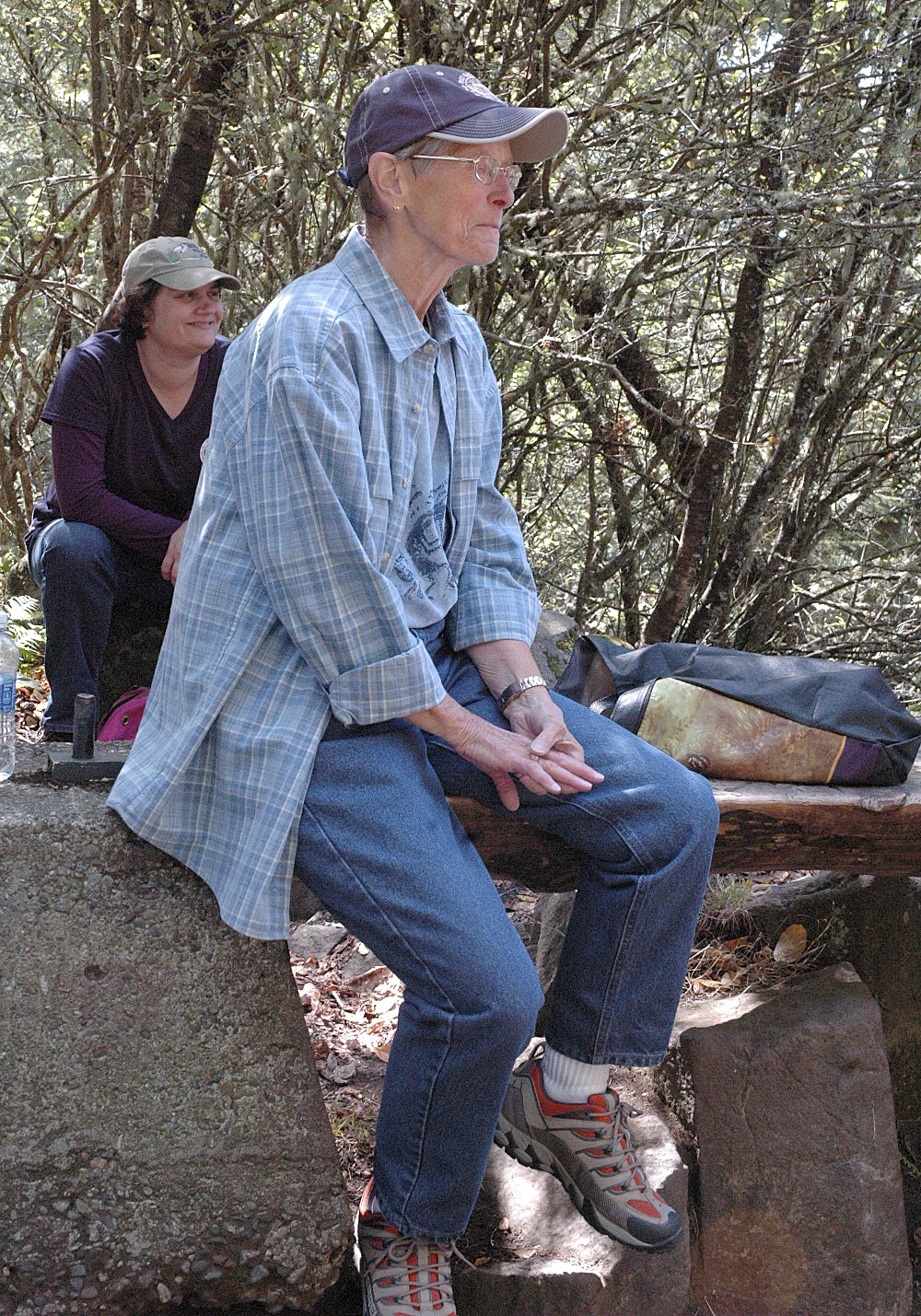It was a half-century ago when fire lookouts dotted the Pacific Northwest landscape. Towers were built atop some of the highest ground, staffed by often-lonely observers who guarded the region against potential infernos in the woods.
Those who have lived in the Enumclaw-Buckley region for more than a few years might recall a bright light shining from the highest elevation of Mount Peak, visible from both sides of the White River. Sitting in that lofty perch for two summers in the 1960s was a young student scraping together the money needed to attend college.
Linda Makela was born and raised in Buckley and was valedictorian of White River High School’s graduating class of 1959. During the summers of 1963 and 1964, she was the Mount Peak fire lookout, the last person to hold the job. As technology progressed, the need for a human observer went away. In 1966, the state’s Department of Natural Resources – citing safety concerns – took down the tower that stood for decades on top of Mount Peak.
Last Friday, the peak’s last employee – now Lin Thrune-Makela – traveled from her home on the Olympic Peninsula and made another trek to the top of Mount Peak.
In governmental circles, it’s officially referred to as Pinnacle Peak, something Thrune-Makela adjusted to after getting hired.
Recognizing the significance of the 50th anniversary of the fire tower’s demise, the DNR’s Alan Mainwaring dived headfirst into an investigation of the local tower. While conducting research at the Buckley museum, someone mentioned having an email address for Thrune-Makela. Contact was made and plans for an anniversary hike up Mount Peak came together.
Friday, she and wife Suzy were joined by Mainwairing, four other DNR employees and three representatives from King County Parks and Recreation. The county agency now owns and manages Mount Peak. The group combined for a small convoy that passed through a gate on the peak’s south side and traveled a gravel road most of the way to the top. The party hiked the last three-quarters of a mile, gaining about 400 feet in elevation.
The thousands of people who scramble to the top of Mount Peak each year – and some do it daily – might be unaware of the local promontory’s historic significance. From 1929 into the ’60s, fire lookouts were the best defense against forest fires. There were more than 800 lookouts in Washington and Oregon, combined, and four in the woods surrounding Enumclaw. Aside from Mount Peak, there were lookouts at Grass Mountain, Carbon Ridge and Point McDonald.
Mount Peak was not only home to a 60-foot lookout, but also had a station were volunteers kept their eyes to the sky. As part of the nation’s aircraft warning system, they watched and waited for enemy aircraft, prepared to signal the alert of an impending attack on America.
Thrune-Makela, who makes her home in Sequim and spends part of each year in Apache Junction, Ariz., vividly recalls the long days spent on top of Mount Peak. Her job kept her in the perch 24 hours a day, seven days a week, for nearly all summer. She pulled down $200 per month for her efforts, but had to buy her own food. The groceries were delivered by a ranger who could drive nearly to the top of Mount Peak in an Army-surplus Jeep.
Thrune-Makela has fond memories of Mount Peak and hesitates to single out anything special.
“It was the whole experience,” she said, noting that the various Pinnacle Peak lookouts weren’t nearly as isolated as many the DNR had scattered around the state.
Because Mount Peak had occasional climbers, “You felt like you were part of the community – you were still part of the world,” she said.
She also points out that hiking hadn’t gained a foothold in the realm of outdoor recreation. The Mount Peak trails weren’t crawling with daily visitors, as is the case today.
Thrune-Makela also clears up any notion that fire watchers were constantly bored, simply sitting and scanning treetops for smoke.
Part of her job was to relay messages. She would receive calls via a land-line telephone connected to the DNR office in Enumclaw, then use a radio to pass along information to rangers in the field.
Life atop Mount Peak had its adventures, she said, from lightning storms to the occasional wildlife visitor. When lightning struck, “it was like being inside a fluorescent light bulb,” she said, adding that her defense against Mother Nature was to stand on a small stool equipped with glass insulators on its feet.
The lookout itself was perched on long legs, supported by even longer wires anchored to the ground. She can laugh now, recalling the time something large and furry rubbed its back on the wires: in her one-room perch that measured 14 feet in each direction, “it was like being in an earthquake,” she said.


